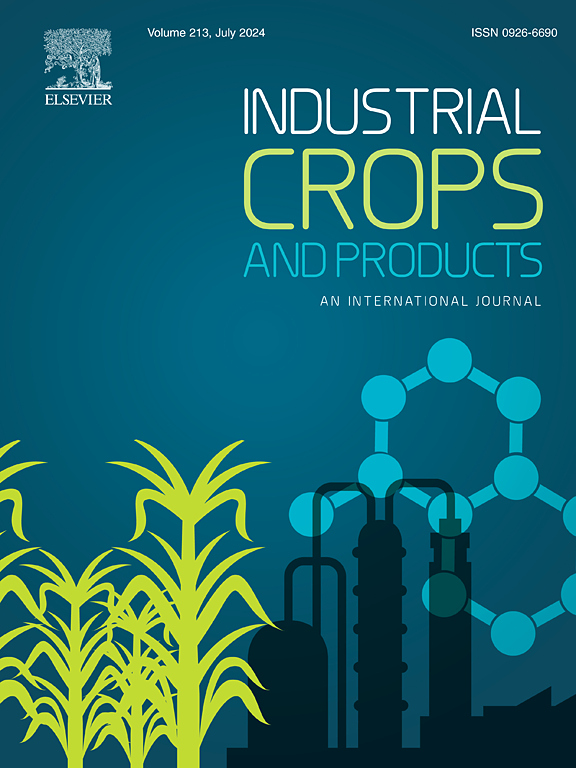Biosuccinic acid production from potato peel waste by fermentative strategies. Process enhancement
IF 5.6
1区 农林科学
Q1 AGRICULTURAL ENGINEERING
引用次数: 0
Abstract
Food waste valorization is a critical strategy to accomplish environmental objectives and achieve the United Nations Sustainable Development Goals. This study focuses on the employment of potato peel waste (PPW), an abundant and renewable byproduct from the potato processing industry, as feedstock for the fermentative production of succinic acid (SA), a versatile bio-based platform chemical. Two fermentation strategies - Sequential Hydrolysis and Fermentation (SHF) and Pre-Saccharification and Simultaneous Saccharification and Fermentation (PSSF) – were implemented employing the bacteria Actinobacillus succinogenes. Key parameters, including liquid-to-solid ratio (LSR), nutrient supplementation, and magnesium carbonate levels, were evaluated in flask experiments. Optimal results were obtained with PSSF methodology at an LSR of 10 g/g without nutrient supplementation, achieving a SA yield of 0.94 g SA/g glucose consumed, with a concentration of 45.91 g/L and a productivity of 0.65 g/L h. The scalability of the process was confirmed in a bioreactor, reaching SA concentrations, yields and productivities of 42.51 ± 1.81 g/L, 0.89 g SA/g glucose consumed and 0.89 g/L h, respectively. Notably, operating at a pH of 6.8 without the addition of magnesium carbonate, simplified the process and reduced costs without compromising productivity. These findings underscore the potential of PPW as a sustainable feedstock for SA production, aligning with circular economy initiatives by transforming agricultural waste into high-value chemicals. This approach supports the development of competitive and environmentally friendly biorefineries.

马铃薯皮废弃物发酵生产生物琥珀酸的研究。过程改进
食物垃圾价值化是实现环境目标和实现联合国可持续发展目标的关键战略。本研究的重点是利用马铃薯加工工业中丰富的可再生副产品马铃薯皮废物(PPW)作为发酵生产琥珀酸(SA)的原料,琥珀酸是一种多功能的生物基平台化学品。利用琥珀酸放线菌实现了顺序水解发酵(SHF)、预糖化和同步糖化发酵(PSSF)两种发酵策略。在烧瓶实验中评估了关键参数,包括液固比(LSR)、营养补充和碳酸镁水平。优化结果与PSSF方法论的光敏电阻 10 g / g没有营养补充,实现股价收益率0.94 g SA / g葡萄糖消耗,浓度为45.91 g / L和生产力0.65 g / L h。过程确认的可伸缩性生物反应器,达到SA浓度,产量和生产力42.51 ±1.81 g / L, 0.89 g SA / g 葡萄糖消耗和0.89 g / L h,分别。值得注意的是,在不添加碳酸镁的情况下,在pH为6.8的情况下运行,简化了工艺,降低了成本,而不影响生产率。这些发现强调了PPW作为SA生产可持续原料的潜力,通过将农业废弃物转化为高价值化学品,与循环经济倡议保持一致。这种方法支持有竞争力和环境友好型生物精炼厂的发展。
本文章由计算机程序翻译,如有差异,请以英文原文为准。
求助全文
约1分钟内获得全文
求助全文
来源期刊

Industrial Crops and Products
农林科学-农业工程
CiteScore
9.50
自引率
8.50%
发文量
1518
审稿时长
43 days
期刊介绍:
Industrial Crops and Products is an International Journal publishing academic and industrial research on industrial (defined as non-food/non-feed) crops and products. Papers concern both crop-oriented and bio-based materials from crops-oriented research, and should be of interest to an international audience, hypothesis driven, and where comparisons are made statistics performed.
 求助内容:
求助内容: 应助结果提醒方式:
应助结果提醒方式:


